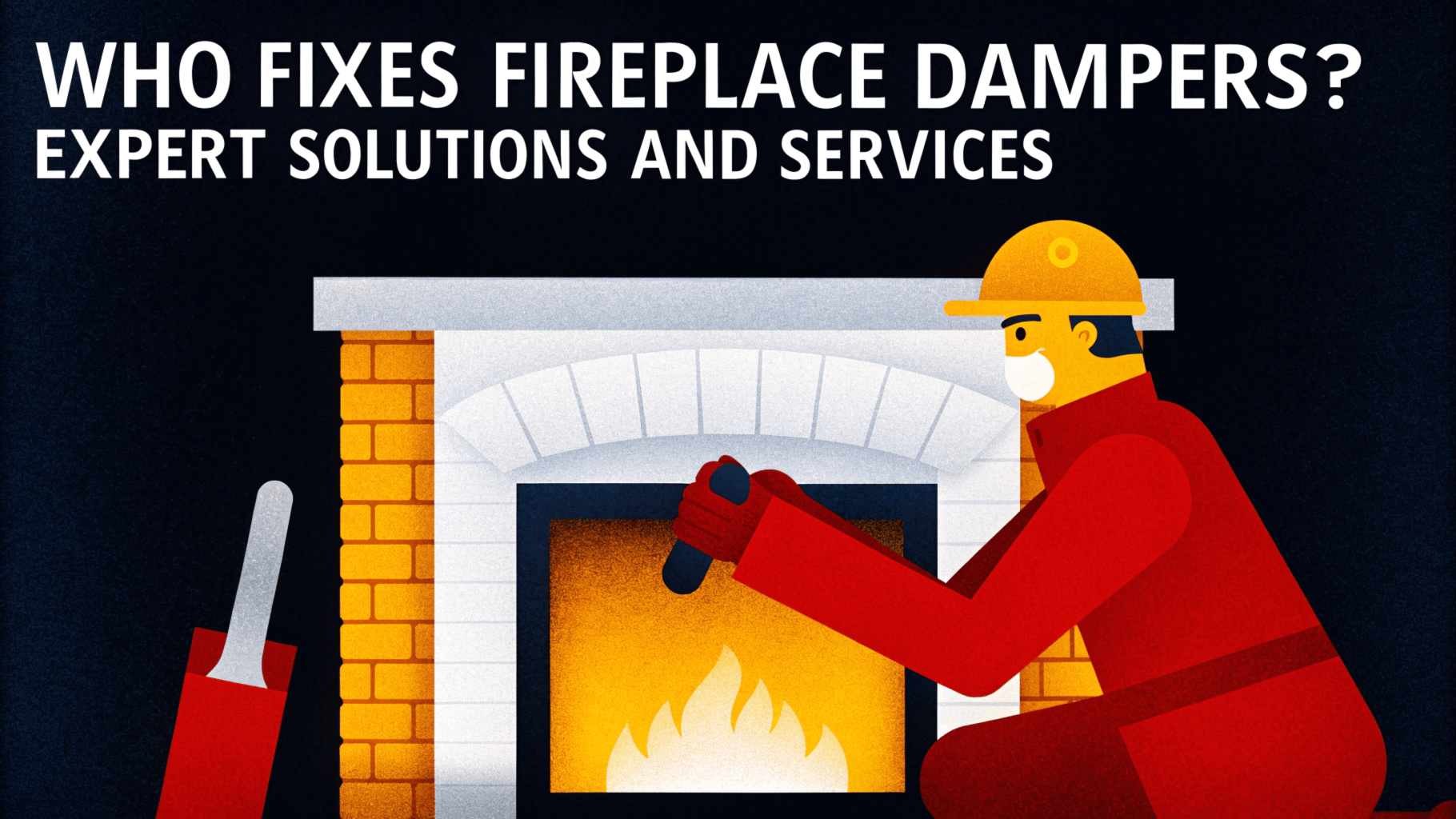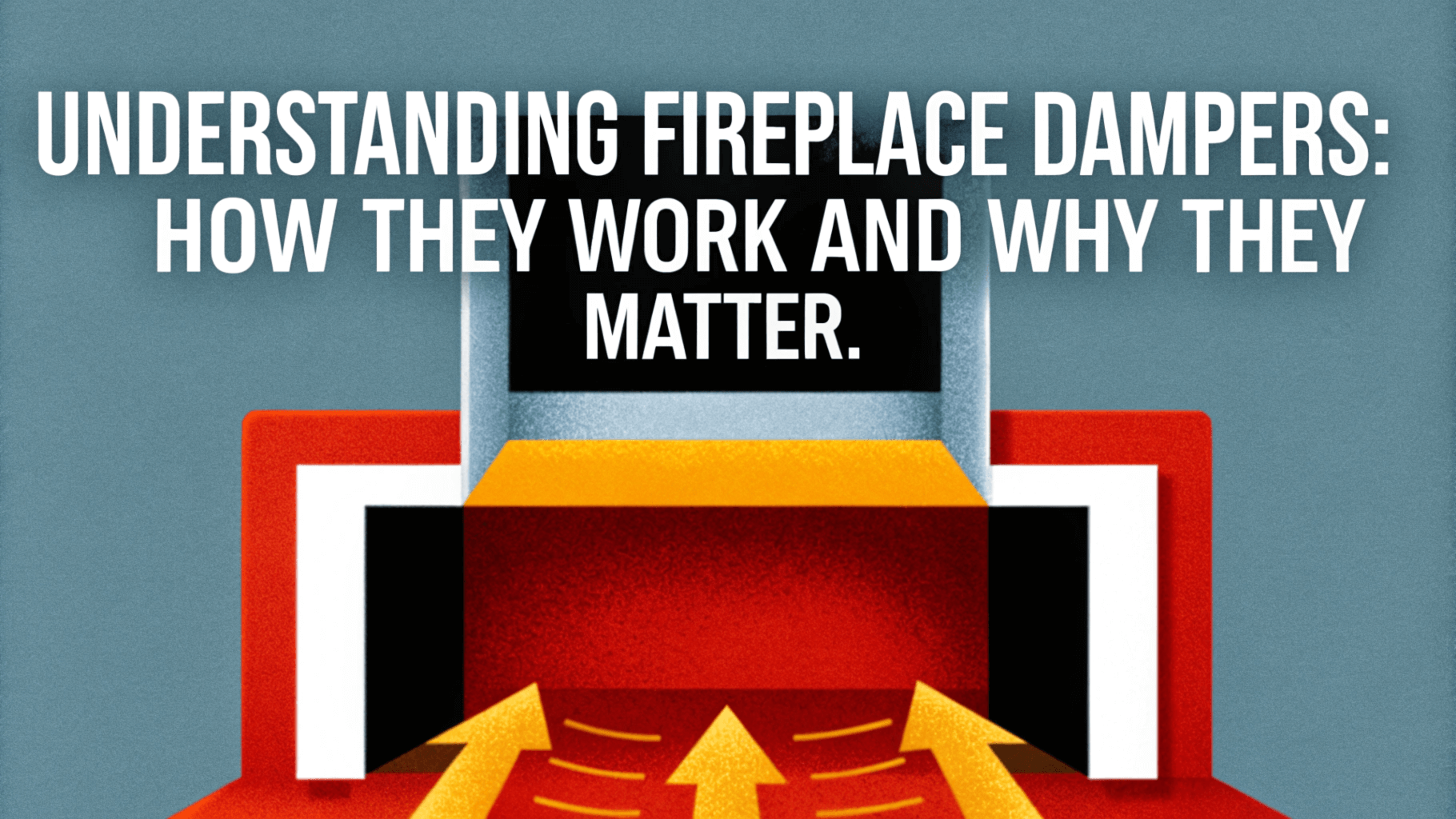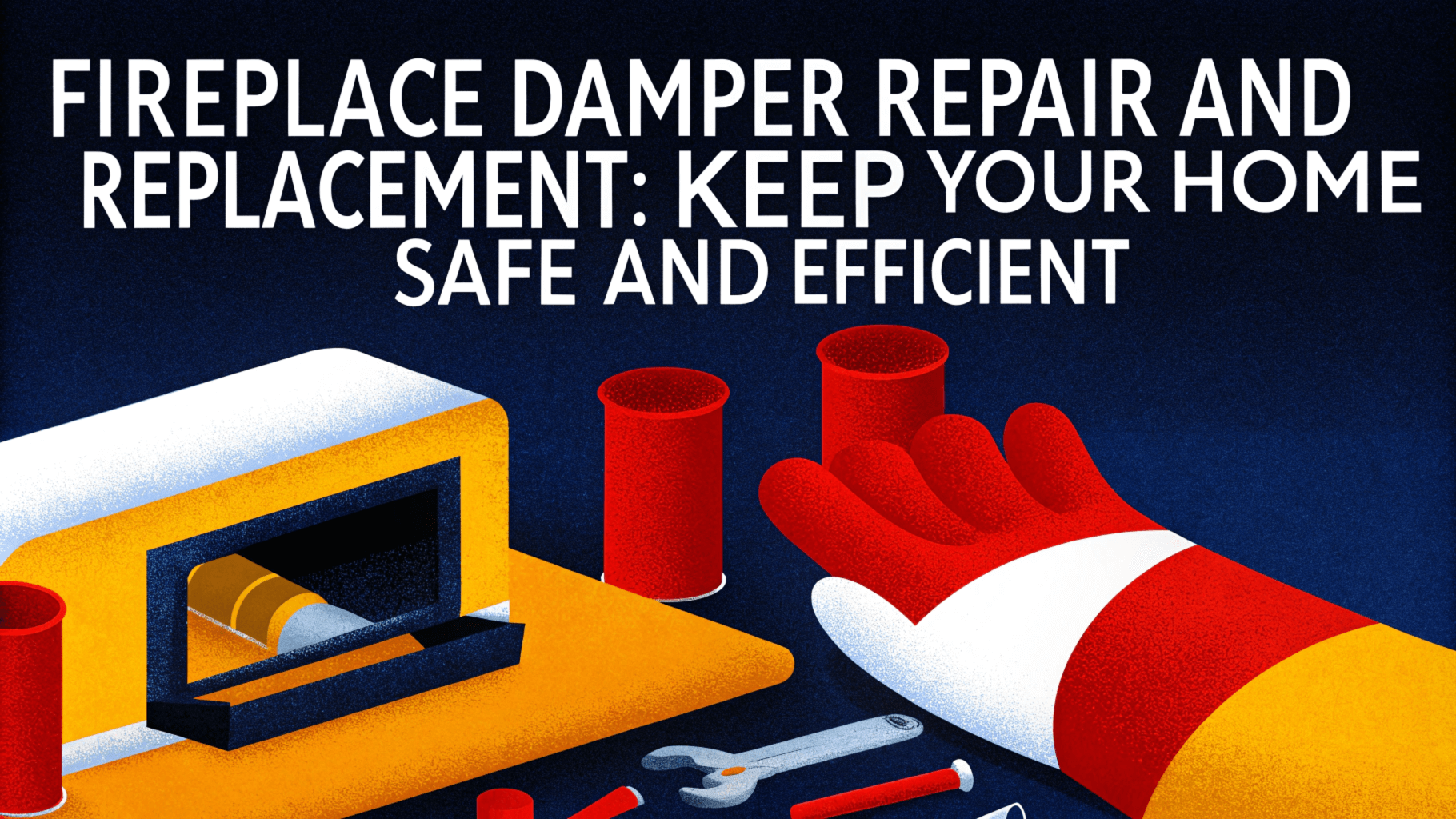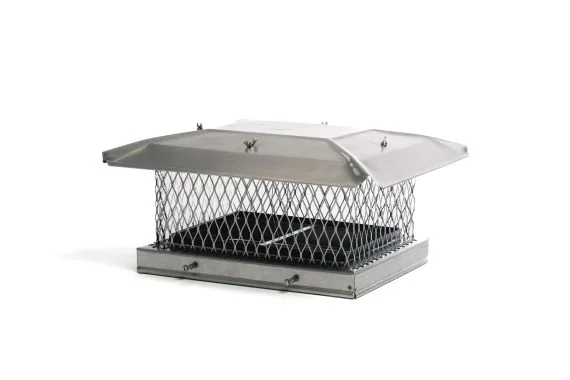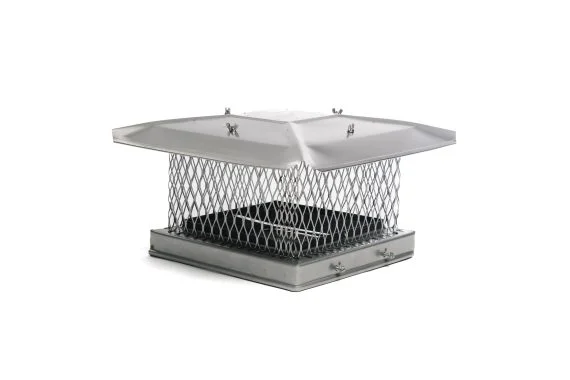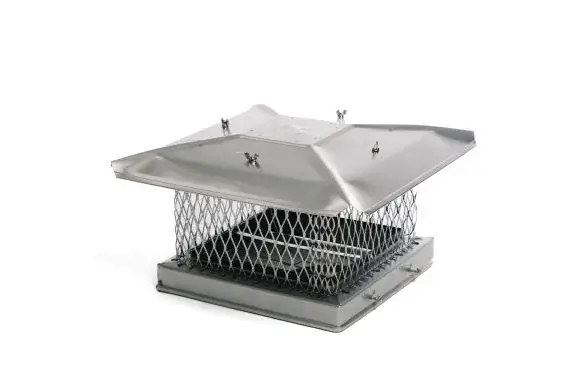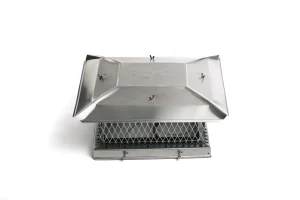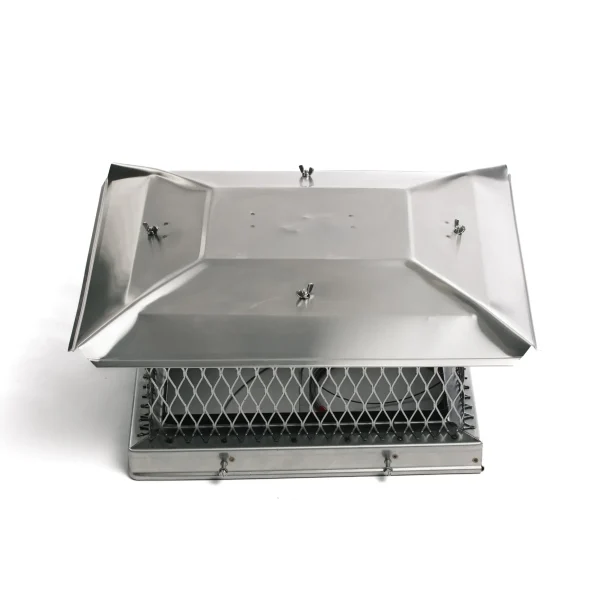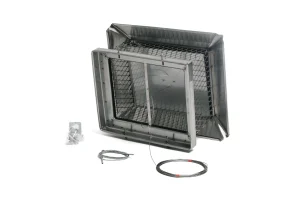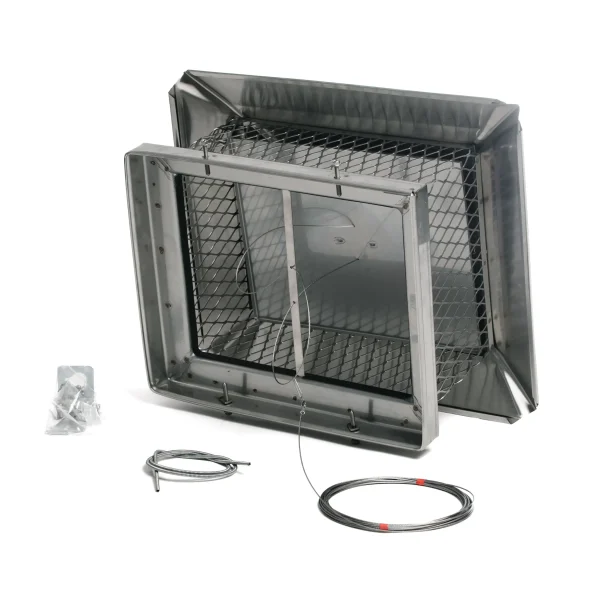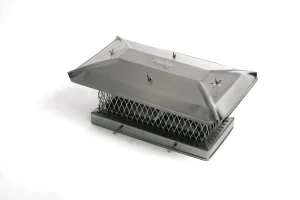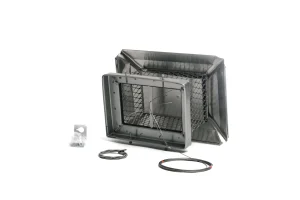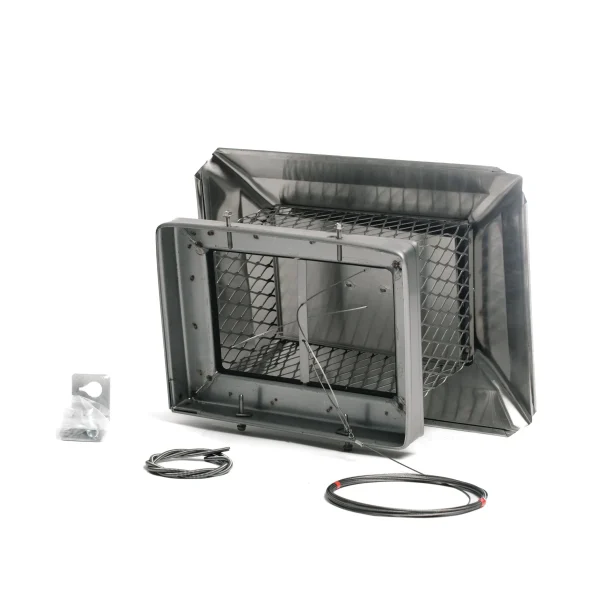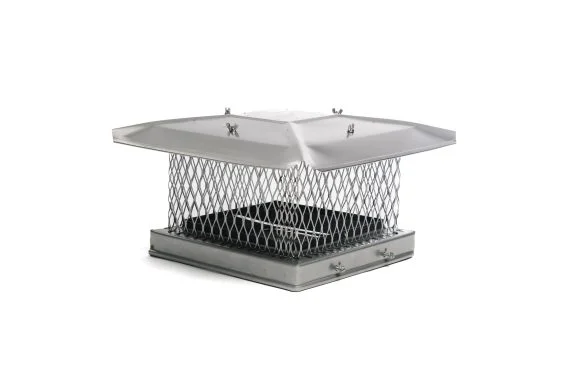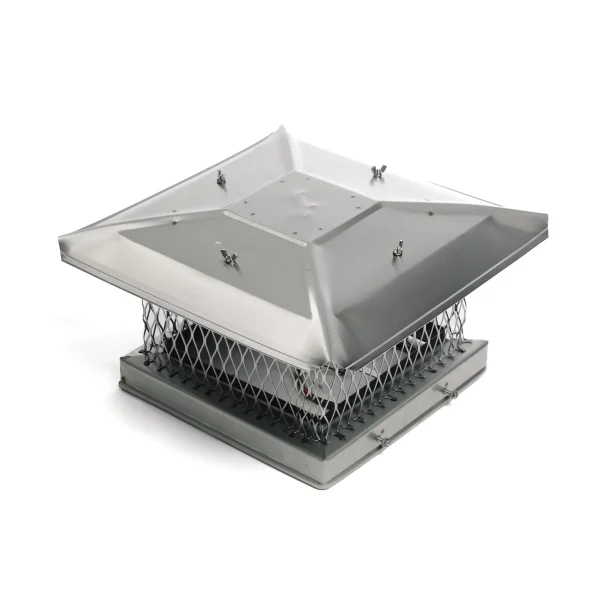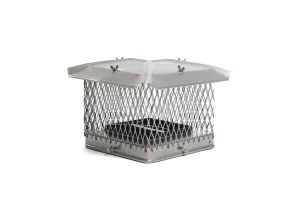Fireplace dampers might not be the first element of a home heating system that comes to mind, yet they play a critical role in maintaining proper fireplace function. They regulate airflow and act as a seal to prevent loss of heat from the home, impacting both energy efficiency and safety. When it comes to repairing or replacing a faulty fireplace damper, it’s crucial to consult with professional chimney technicians who can ensure the job is done safely and effectively.
While some homeowners might be tempted to tackle damper issues themselves, a professional approach guarantees that the right parts are used, and the entire system functions optimally. With expert assistance, not only is the immediate problem addressed, but we also gain useful insights into maintaining our chimney systems effectively over the long term. This not only enhances the safety of our fireplace but ensures we retain energy efficiency throughout the colder months.
For those unfamiliar with damper mechanisms or facing issues like rust or warping, professional services can provide the appropriate solutions. They offer peace of mind with comprehensive assessments and effective repairs, helping us avoid potential hazards associated with improper damper function.
Key Takeaways
- Properly functioning fireplace dampers are vital for energy efficiency and safety.
- Professional chimney technicians are recommended for damper repairs and replacements.
- Expert services offer comprehensive care and maintenance tips.
Understanding Fireplace Dampers
Fireplace dampers play a critical role in the functionality and efficiency of your chimney system. By controlling airflow, they help prevent heat loss and improve safety. In the following sections, we’ll explore the different types of dampers, their essential functions, and common issues you might encounter.
Types of Fireplace Dampers
There are several types of fireplace dampers, each serving unique purposes. Throat dampers are located just above the firebox and are the most traditional type. They control airflow directly below the chimney flue. Top-sealing dampers, also known as top mount dampers, sit at the top of the chimney. These dampers provide an airtight seal, preventing energy loss and keeping out debris and pests. Each type offers different benefits, with top-sealing options typically providing superior energy efficiency.
Function of a Chimney Damper
A chimney damper acts like a door within the chimney, opening and closing to manage airflow. When a fire burns, the damper is opened to allow smoke and gases to exit the home. Once the fire is out, closing the damper prevents heat loss and keeps cold drafts from entering. This operation is vital for both energy efficiency and safety, as it ensures that harmful gases do not linger in the home. Properly operating dampers help maintain the desired temperature in our living spaces and enhance the overall heating efficiency of our fireplaces.
Common Issues with Damper Operation
Despite their importance, dampers can encounter several issues over time. Common problems include rust or warping due to moisture exposure, leading to difficulty in opening or closing. A damper handle or lever might become loose or break, impairing function. Additionally, debris build-up or animal nests can obstruct operation. Regular inspection and maintenance are crucial to avoid these problems. When we notice any signs of malfunction, it may be necessary to repair or replace parts to ensure optimal performance. By addressing these issues promptly, we can maintain the efficiency and safety of our chimney systems.
Symptoms of a Faulty Damper
A faulty fireplace damper can lead to various issues that physically manifest in your home. By noting specific symptoms like difficulty in operation, unwanted drafts, and creosote deposits, we can better diagnose damper problems.
Difficulty in Opening and Closing
When our damper does not open or close smoothly, it’s a clear sign of trouble. This difficulty can stem from several reasons, like rust buildup or warping of the damper plate. A damper that sticks or jams often requires more force than usual to operate. This increased effort can cause wear on the handle or chain mechanism, further compounding the problem.
Examining the damper regularly for signs of rust or damage can prevent this issue. Sometimes, debris or creosote buildup can obstruct the damper’s path, making it essential to clean the area frequently. If left unresolved, these obstructions can affect the efficiency of our fireplace, leading to more significant problems down the line.
Excessive Heat Loss or Draft Problems
Noticing drafts in a room where a fireplace is located can point to damper problems. When the damper fails to seal properly, it allows warm air to escape and cold air to enter, causing uncomfortable drafts and increased energy bills. These issues are often exacerbated during colder months when heat retention is crucial.
An improperly sealed damper can be due to a misaligned damper plate or worn-out seal. Checking the damper alignment and ensuring that it closes tightly can help mitigate these problems. Installing a top-sealing damper provides a more effective solution for preventing air leakage and maintaining consistent indoor temperatures.
Visible Creosote Deposits or Damage
Creosote, a byproduct of burning wood, can accumulate in our chimneys and signify a damper problem. When our damper doesn’t function efficiently, smoke doesn’t exit the chimney properly, leading to increased creosote buildup. This buildup poses a safety risk and can create blockages that hinder damper performance.
Regular inspection and cleaning of the damper and chimney can prevent creosote accumulation. If we notice visible damage to the damper, such as cracks or gaps, repairs or replacements may be necessary. Addressing these issues promptly ensures the safety and functionality of our fireplace system.
Fireplace Damper Repair and Replacement
Fireplace damper maintenance plays a crucial role in ensuring the efficiency and safety of a fireplace. Understanding when to repair a damper assembly and when to replace it can save both time and money. We will also explore the essential steps in installing a new damper.
Repairing a Damper Assembly
A common issue with dampers is the accumulation of rust or debris. Regular cleaning helps keep it functioning smoothly. It’s important to inspect the rod and nut securing the damper to ensure tightness and security.
If the damper mechanism feels stiff or does not open and close properly, lubrication can solve this issue. We recommend using a suitable rust converter and sealant to protect the assembly from further damage. For warped components due to heat, replacement may be necessary if repairs are ineffective.
When to Consider Replacement
There are signs indicating that replacing a damper might be more cost-effective than repairs. Cracked or warped dampers lose their insulating capabilities, leading to energy inefficiency. Ineffective sealing causes unwanted drafts and heat loss.
In such situations, installing a top-sealing damper could be beneficial. These dampers provide a better seal and help prevent water and debris from entering the chimney. Replacement is also advised when repairs become frequent and expensive, and when modernization of the fireplace is desired for efficiency.
Installing a New Damper
When installing a new damper, it is essential to select the right model suited to our fireplace style and design. Top-sealing dampers are common choices today, offering advanced sealing capabilities and durability. During installation, proper alignment of the damper with the flue is critical to ensuring a snug fit and effective operation.
We must ensure that all components, including the cable or handle, are securely attached and tested for smooth function. In many cases, professional assistance is advised to ensure safety and precise installation, especially when dealing with complex setups.
This detailed approach to fireplace damper repair and replacement guarantees not only the longevity of the fireplace but also enhances its efficiency, ensuring a warm and comfortable environment.
Enhancing Efficiency and Safety
To optimize the performance of our fireplaces and ensure safety, we need to focus on airflow, energy efficiency, and minimizing hazards. By addressing these key areas, we can create a safer and more efficient heating environment.
Improving Airflow and Ventilation
Effective airflow and ventilation are essential to maintaining a safe fireplace. A properly functioning damper regulates the airflow into the chimney, allowing smoke and gases to exit efficiently. This prevents the intrusion of cold air and enhances combustion.
By optimizing airflow, we can improve energy efficiency. It reduces creosote buildup by ensuring that smoke is effectively expelled. Regular checks and adjustments help maintain the damper’s performance. We might consider professional services for thorough assessments and potential improvements.
Reducing Heating Costs
Controlling heating costs is a priority for many of us. A well-maintained damper is crucial as it helps retain warm air inside when not in use, preventing heat loss through the chimney. This can significantly cut down on energy bills by reducing the need for additional heating.
Efficient damper use reduces the need for extra heating fuel, which is both cost-effective and environmentally friendly. Regular inspections and timely repairs, such as sealing gaps or replacing worn-out components, ensure our dampers operate at peak efficiency.
Preventive Measures Against Creosote Buildup
Creosote buildup poses safety risks and can lead to chimney fires. Implementing preventive measures is vital to safeguarding our homes. Ensuring that our fireplace damper is clean and functions properly reduces the likelihood of excessive soot accumulation.
By improving airflow, dampers aid in the complete combustion of fuels, minimizing creosote formation. Scheduling regular cleanings and inspections allows us to catch issues early. For optimal safety, it’s advisable to hire professionals for thorough chimney sweeps and damper evaluations.
Expert Services for Chimney Dampers and Maintenance
Maintaining chimney dampers is essential for the safety and efficiency of your fireplace system. Choosing between DIY repairs and professional services can be challenging, but the right choice ensures long-term functionality and peace of mind.
Why Choose Professional Services for Dampers?
While DIY repairs may seem cost-effective, they require a deep understanding of chimney components, such as dampers, flues, and masonry fireplaces. Without proper tools and safety precautions, you risk inefficient operation or even potential hazards.
Hiring professional chimney technicians ensures expert care. Professionals use specialized equipment to address issues effectively, ensuring every part—from the chimney cap to the top-sealing damper—functions optimally and safely.
How to Find a Reliable Chimney Specialist?
Look for certified professionals with proven expertise in chimney systems. Certifications from recognized safety organizations demonstrate their ability to handle complex repairs and maintenance tasks. Checking online reviews and references can also help gauge their reliability and skillset.
Professional services may cost more initially, but they save you from costly mistakes and provide unmatched safety. Knowing your fireplace system is in capable hands offers invaluable peace of mind.
Why Recommend Chimcare?
At Chimcare, we specialize in comprehensive chimney and damper services. With years of experience and a team of certified technicians, we ensure your fireplace system is safe, efficient, and ready to use. From chimney cap installations to damper repairs, our services are tailored to meet your specific needs.
Don’t compromise on safety—trust Chimcare for all your chimney maintenance and repair needs. Contact us today to schedule an inspection or service.
Why Choose Professional Services for Fireplace Damper Repairs?
A malfunctioning fireplace damper can compromise the safety and efficiency of your home. By consulting certified chimney technicians, you ensure your fireplace operates at peak performance while avoiding potential hazards like smoke backflow or heat loss.
- Comprehensive Assessment: Experts evaluate your damper system for issues like rust, warping, or debris buildup.
- Reliable Repairs: From stuck dampers to broken handles, professionals address all concerns with precision.
- Long-Term Solutions: Install top-sealing dampers for better insulation and energy savings.
Don’t let a faulty damper disrupt your cozy fireplace moments. Shop high-quality dampers or explore our installation guide for step-by-step assistance.
Frequently Asked Questions
When it comes to fireplace dampers, several questions often arise. We address common queries, including signs of repair needs, where to find service professionals, typical costs, fixing handles, types available, and the process of replacing dampers.
What are the indications that a fireplace damper needs repair?
Fireplace dampers may require repair if they fail to open or close properly, leading to smoke entering the home or difficulty in maintaining a controlled fire. Rust, warping, or visible damage are clear signs a damper needs attention.
Where can I find professional fireplace damper repair services?
Professional repair services can be found through chimney sweep companies, HVAC service providers, or specialized fireplace repair businesses. It’s important to choose certified and experienced professionals to ensure proper assessment and repair.
What is the typical cost to replace a fireplace damper?
Replacement costs vary based on the type of damper. Simple damper plates might cost as little as $50, while more sophisticated models, like cast-iron dampers with opening mechanisms, range from $200 to $300. Labor and additional parts can increase these expenses.
How can a fireplace damper handle be fixed if it’s malfunctioning?
If a damper handle malfunctions, it often requires a detailed inspection to determine whether the issue lies with the mechanism. A common fix might involve lubricating parts or adjusting the handle’s connection to ensure smooth operation.
Are there different types of fireplace dampers available on the market?
Several types of fireplace dampers exist, each designed for different needs and efficiency levels. Traditional throat dampers, top-sealing dampers, and chimney cap dampers are some common variants, each offering unique benefits for controlling airflow and protecting the chimney.
What process is involved in removing and replacing a chimney damper?
Removal and replacement of a chimney damper involve careful steps: identifying and purchasing the correct damper type, skillfully removing the old damper, and securely installing the new one. Professional installation ensures safety and optimal function.

